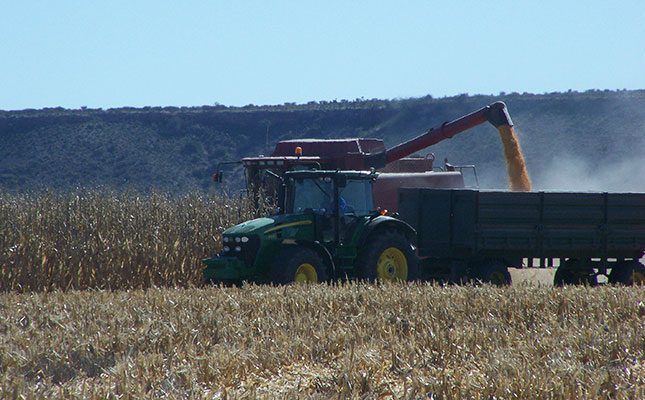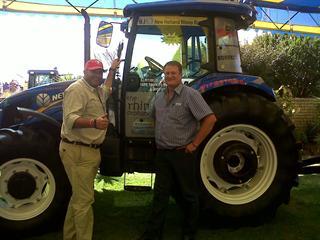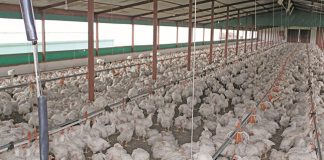
After falling by 10 points in the first quarter of 2024, the Agbiz/IDC Agribusiness Confidence Index remains unchanged at 40 points in the second quarter – the lowest level since the height of the COVID-19 pandemic in the second quarter of 2020.
Paul Makube, senior agricultural economist at FNB, said he expected agribusiness confidence to continue its downward trend in the first quarter of 2024 because the survey was conducted in the first three weeks of March, when El Niño-induced drought conditions were experienced over large parts of the summer grains and oilseed region.
READ Understanding the value of maize
The impact of the weather on sentiment is visible in various subindexes. The general agricultural conditions subindex fell by 22 points to 18 in the first quarter, mirroring damage caused by heatwaves and dryness since the start of February on the summer grains and oilseed producing regions.
This is the lowest level since the first quarter of 2016 when the last intense El Niño caused widespread devastation in South Africa, according to a statement by Agbiz.
The turnover subindex was down by 14 points to 52, reflecting expectations of a poor summer grains and oilseed harvest in an environment where input costs remained relatively high.
The subindex measuring the volume of export sentiment fell by 7 points to 35, signalling a potential decline in export volumes this year from a record of US$13,2 billion (about R245 billion) in 2023.
Agbiz identified the potential poor summer grain and oilseed harvest as the biggest export challenge, with underperforming ports and railways further adding to pessimism.
Makube said that the rest of the subindexes, except for financing costs, helped to support agribusiness confidence.
The financing costs subindex fell by 14 points to 27, signalling that agricultural firms were still worried by the elevated interest rate in an industry where farm debt was just over R200 billion.
READ A new strategy for maize marketing
The net operating income subindex improved slightly by one point to 48, driven by agribusinesses that operated in financial services, while the agribusiness subindex increased by 6 points to 59, driven by input business respondents.
The employment subindex rose by 3 points to 50. According to Agbiz, this was a surprise given the challenging agricultural production levels, but probably due to employers’ views being influenced by the robust results of the fourth quarter of 2023 when 920 000 people were employed.
The capital investment subindex improved by 7 points to 50, which likely reflected investments in alternative energy sources as the sector continued to invest in mitigating against the effects of load-shedding.
The general economic conditions subindex recovered by 20 points to 30, which was still way below the neutral point of 50.
According to Agbiz, this could be linked to expectations of a reduction in load-shedding and was broadly consistent with improvements in various market analysts’ GDP forecasts for 2024.
The debtor provision for bad debt was down by 9 points to 27, which was a favourable development.
Makube said that agribusiness confidence for the rest of the year would highly depend on the size of the summer crop, which many people expected would be downgraded again.
The Crop Estimates Committee in its first estimate in February pegged the summer crop at 17,41 million tons, which was a 13,5% year-on-year decline.
The maize estimate was slashed by 12,6% year-on-year to 14,36 million tons, primarily because of a 17, 2% reduction in the expected white maize harvest.
This estimate was nonetheless still above the 10-year average of 13,1 million tons for the commercial maize crop.
Makube said a further downgrade in the maize harvest could drive up food inflation, which decelerated to the lowest level in 25 months in February, at 6% year-on-year from 7% in January.
Except for the sugar, sweets, and desserts, which remained flat, the rest of the food subcategories decelerated, with oils and fats extending their trend in negative territories.
An increase in food inflation, in turn, could result in the South African Reserve Bank taking longer to reduce interest rates.
Makube identified fuel prices as another risk. The latest Central Energy Fund statistics reveal an under-recovery of 32c and 34c for 95 unleaded petrol and 93 unleaded petrol respectively, and an over-recovery of 28c and 33c for 500 ppm diesel and 55 ppm diese, respectively.
Wandile Sihlobo, chief economist at Agbiz, said South Africa faced a daunting year ahead:
“Although weather-related risks are a major concern for this year, there remain aspects that policymakers collaboratively with the private sector could tackle to unlock the long-term growth potential of South Africa’s agriculture, such as weakening municipalities, deteriorating roads, animal diseases, inefficiency in the registration of new agrochemicals and seeds, rising crime, inefficient logistics and persistent load-shedding.
“However, with the elections ahead of us, it is unclear if there will be a serious focus on policy matters in the months ahead.”
The mood amongst the South African agribusinesses and farmers remains downbeat. pic.twitter.com/F4M5ukhwEn
— Wandile Sihlobo (@WandileSihlobo) March 25, 2024












